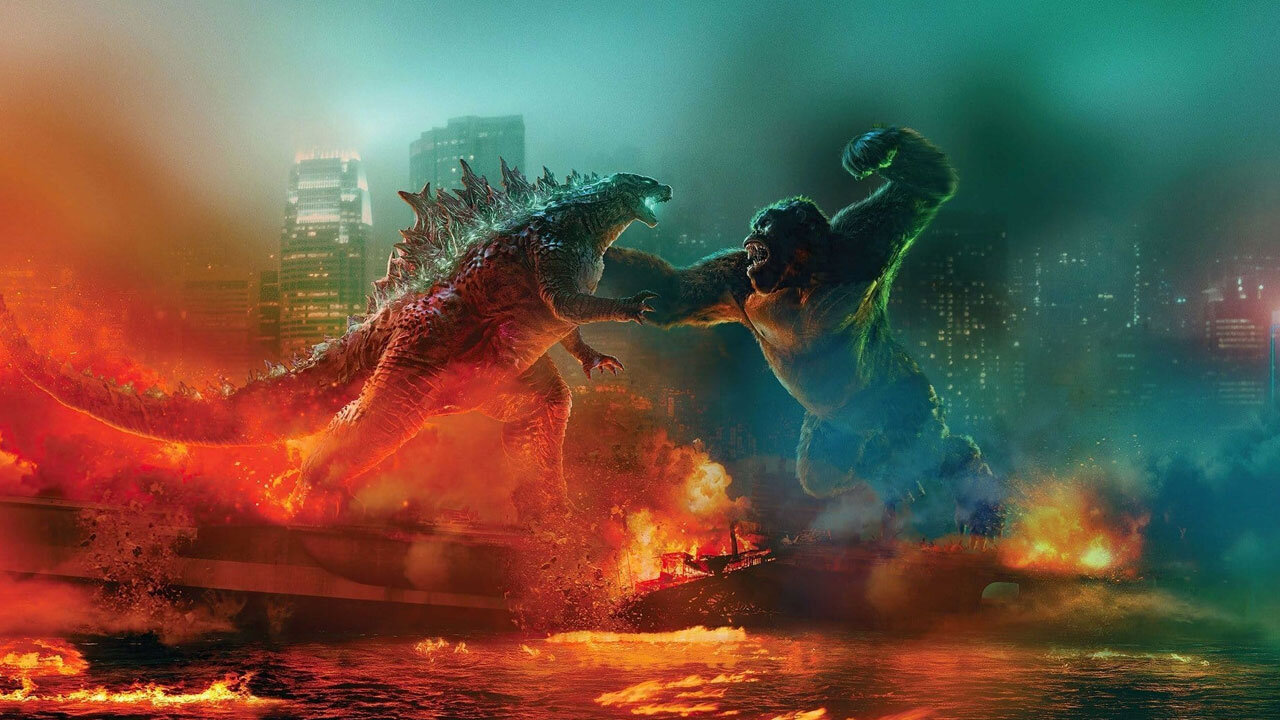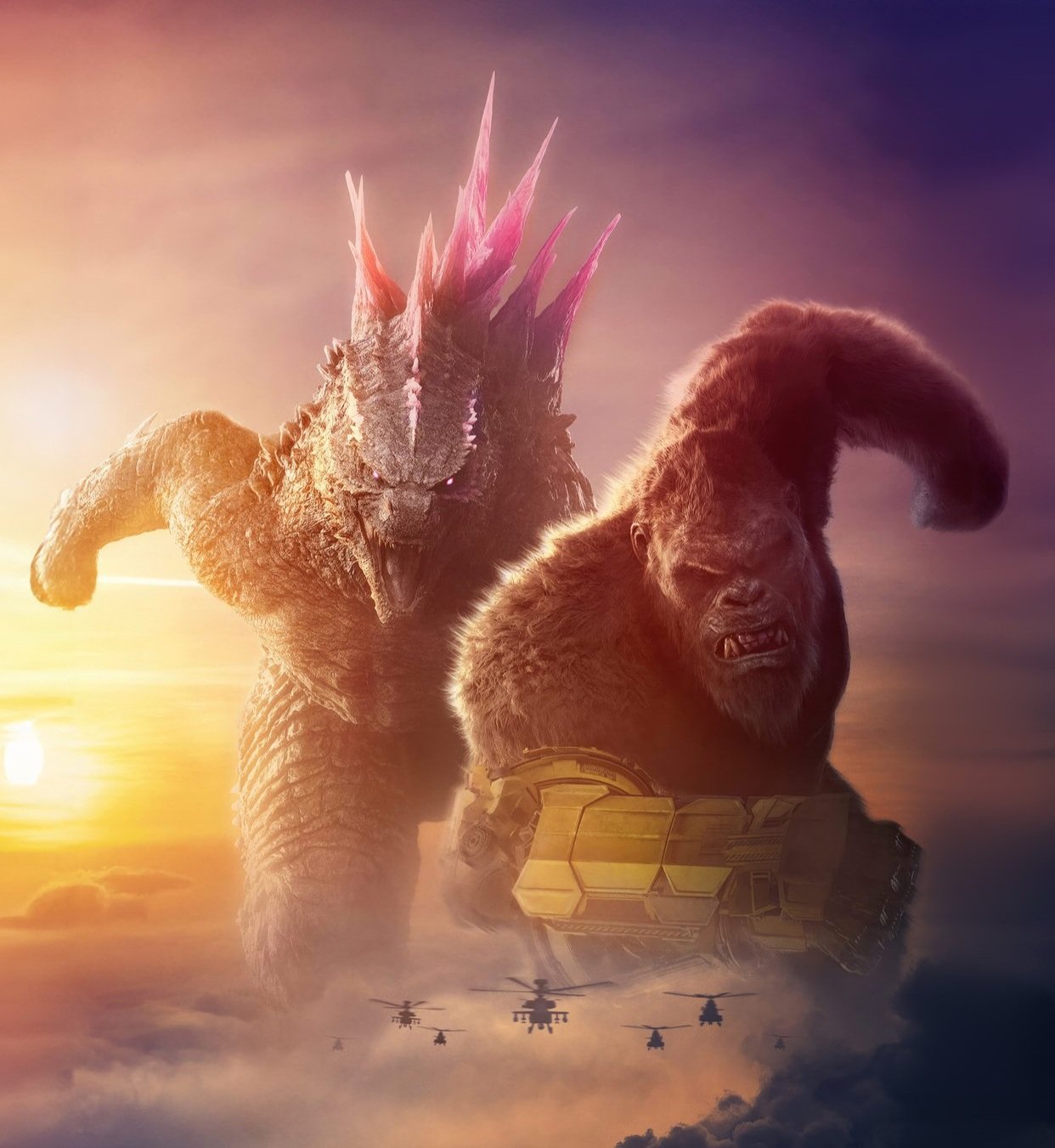Kong: Skull Island

A monster movie that is unashamedly fun, and that strikes the right balance between exhilarating action and tongue-in-cheek humour.
Premise: In 1973, in the immediate aftermath of the Vietnam War, an expedition of US scientists and their military escort venture to the newly discovered Skull Island in the Pacific, intent on unlocking its secrets before the Russians do. They discover an island of myths, legends and monsters, where a 100-foot tall ape known as Kong rules, and unimaginable giant creatures roam the land.
Verdict:
This is one of those films that’s right on the cusp between three and four stars; on the one hand, it doesn’t have any huge surprises and simply “does what it says on the tin”, but on the other hand, it does so with such vigour and visual flair that if you have any affection for monster movies, there’s a lot to enjoy here.
This is, in case you didn’t already know, Legendary Picture’s attempt to introduce King Kong into the same fictional universe as its 2014 version of Godzilla (which was itself a reboot of that universe, brought to life with freshness and enthusiasm by Gareth Edwards, who went on to direct Rogue One: A Star Wars Story). As a result, this film has plot elements that tie into 2014’s Godzilla, most notably the inclusion of the governmental scientific organisation Monarch, which appeared in Godzilla and which in this film is headed up by Randa (John Goodman), with scientific support from Brooks (Corey Hawkins) and San Lin (Jing Tian).
“…populates Skull Island with a variety of inventive and monstrous creatures…”
A decision was also made in the development of this film to make Kong himself much larger than he had ever been in a Hollywood film, so whereas in previous iterations he has, in effect, just been a very large ape, in this film he is a towering 100-foot tall giant. Some cynics have said that the decision was motivated purely by the desire to have Kong crossover into the Godzilla universe (where Godzilla was about 350-feet tall in the 2014 film), but the change does also serve some plot functions as well. Firstly, it does feed into Kong’s status on Skull Island, where he is seen as a “god” by the local inhabitants (rather than simply a very large ape), and secondly, it also ties into the mythology being established in this rebooted film series.
Godzilla established the theory (being researched by Monarch) that there were ancient species of gigantic creatures that walked the Earth before Man, and which still remain hidden to this day. These creatures, referred to in both films as MUTOs (Massive Unidentified Terrestrial Organisms), are almost elemental forces of nature, rather than simply evolutionary abnormalities. And so whereas the previous versions of King Kong have depicted Skull Island as a prehistoric sanctuary, where Kong evolved as a large ape alongside dinosaurs and other prehistoric animals, this film depicts Kong as a descendant of the ancient MUTOs, and populates Skull Island with a variety of inventive and monstrous creatures, none of which are based on dinosaurs (which would have taken the film into Jurassic World territory).
“…a visually spectacular monster movie…”
The end result is a visually spectacular monster movie, in which we not only have Kong himself, but also a wide variety of imaginative creatures – some peaceful, some horrifying – for our human characters to encounter.
As far as the human characters are concerned, it is a bit of a mixed bag. Samuel L Jackson arguably gets the most to do as Colonel Packard, the military commander of the ill-fated expedition, and John C. Reilly threatens to steal every scene he’s in as Marlow, the World War II pilot who’s been marooned on Skull Island for the last thirty years and who’s gone a little … peculiar. Some of the more minor characters make an impact in terms of their humour and camaraderie (and in particular, I loved Shea Whigham as Cole, a veteran serving in Packard’s unit), but others are there primarily just to deliver exposition (like John Goodman and Corey Hawkins), and others don’t really have anything to do at all (like Jing Tian).
Surprisingly, the script doesn’t really give Golden Globe winner Tom Hiddleston or Oscar winner Brie Larson much to do in their roles as ex-SAS tracker James Conrad and anti-war photojournalist Mason Weaver. Conrad is a mercenary with an underlying sense of decency, and Weaver is a peace activist intent on uncovering the real purpose behind the expedition to Skull Island, but beyond that, their characters are fairly unshaded.
“…a ‘mash-up’ between Vietnam War aesthetics and traditional creature-feature trappings…”
But that said, Hiddleston and Larson do well with what they’re given, and their charisma and likeability carry their characters even when the script doesn’t add much flesh to their bones. And unlike 2014’s Godzilla, the human characters do at least have some influence on the plot of the film, rather than simply being bystanders and observers.
The 1970s post-Vietnam War setting also adds a whole new dimension to concept of what a “King Kong” film looks like. Most versions have been set in the early Twentieth Century, and earlier in its development process this version was also going to be set in that time period. However, when director Jordan Vogt-Roberts came on board, he persuaded the studio to try something new, and so we have a “mash-up” between the Vietnam War aesthetics of films like Apocalypse Now and Platoon, and the traditional creature-feature trappings of a King Kong movie. This also adds a lot of colour and flavour to the film, as it boasts a brilliant 1970s soundtrack, and ties into the events of the time, such as the military’s disillusionment following the end of the Vietnam War, and the start of the Landsat programme to map the Earth using satellite imagery for the first time (which is how Skull Island is discovered in this version).
“…a great rollercoaster ride of a movie…”
All in all, the film is a lot of fun, and much of the humour has its tongue firmly in its cheek. Yet this is by no means a spoof, and the action and tension are expertly handled by Jordan Vogt-Roberts. It’s visually stunning in terms of both the creature designs and the cinematography, with a huge sense of realism added by the decision to film largely on location (in Hawaii, Vietnam and Australia) rather than on a soundstage with green-screen. For what it is, it’s a great rollercoaster ride of a movie.
Kong: Skull Island is the second of the planned “monster-verse” movies, where the governmental scientific research organisation Monarch is likely to be the connecting factor. A second Godzilla film, Godzilla: King of the Monsters, is planned for 2019, with Godzilla vs Kong planned for a year later in 2020. It currently sounds like each film will focus on new (human) characters, which will be a nice way to keep the movies fresh while still having them linked together as part of a larger narrative.
Oh, and make sure you stay for the post-credit scene!






